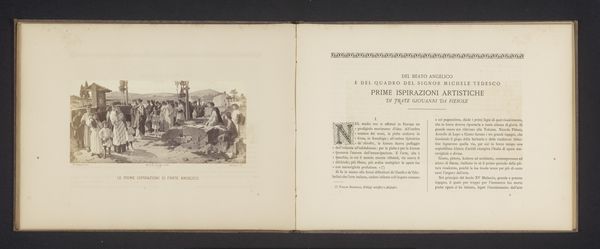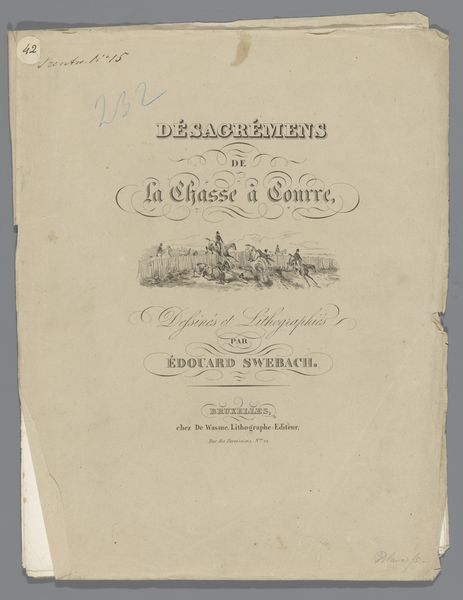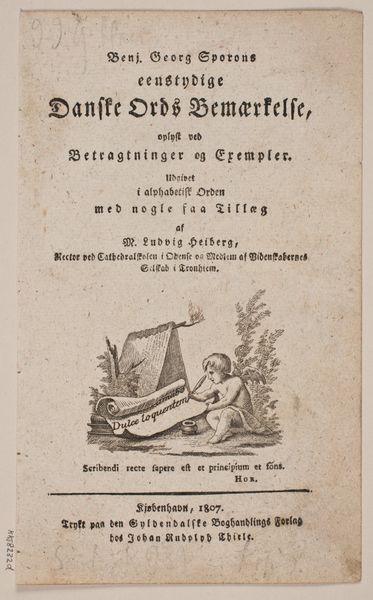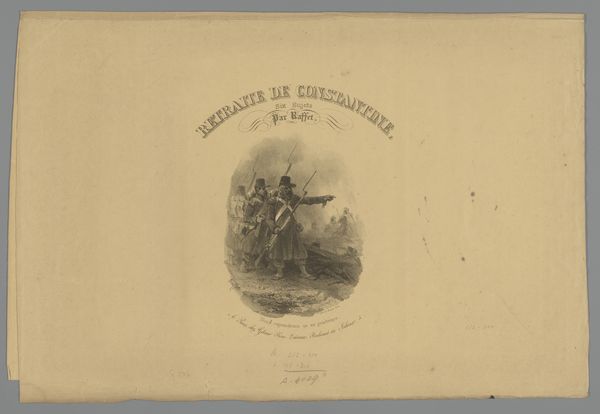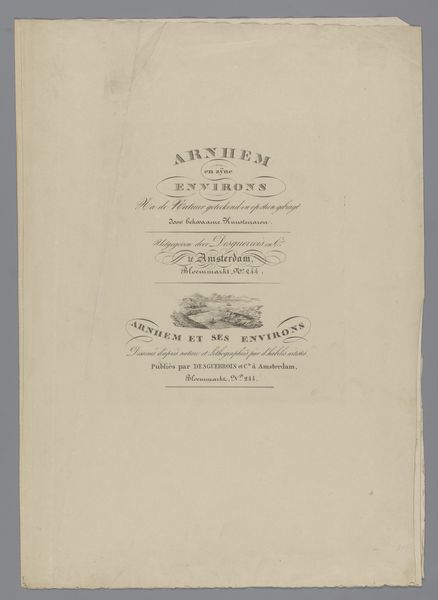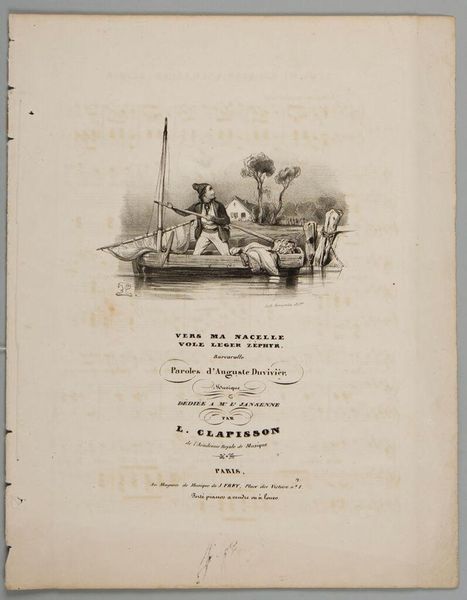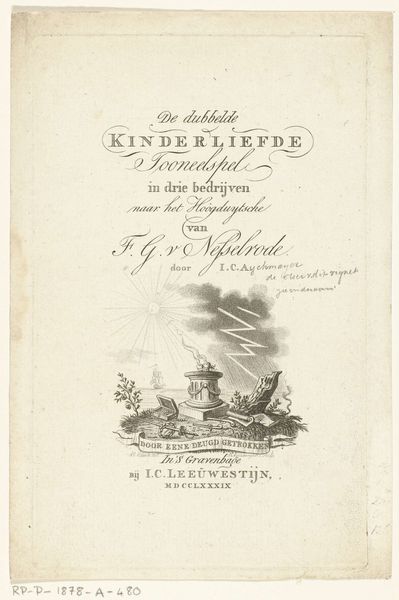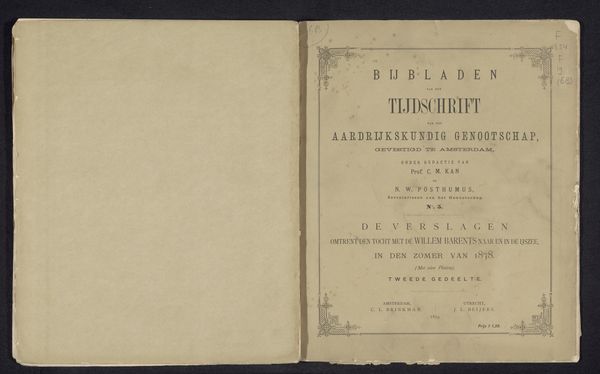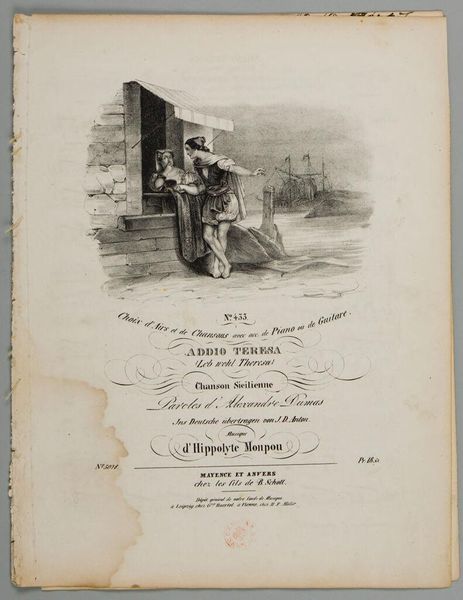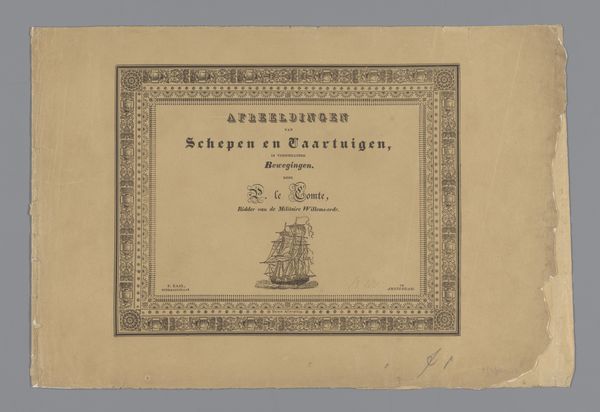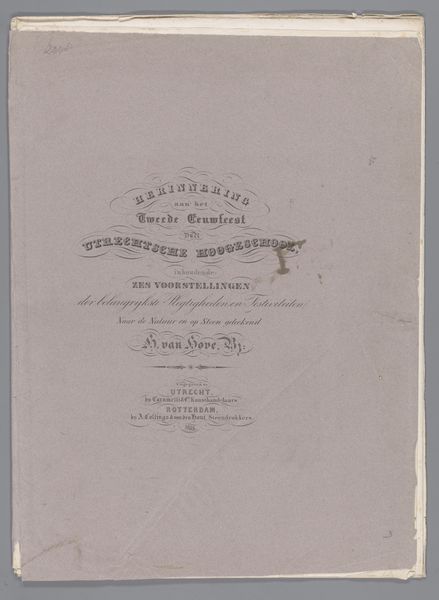
Titelprent voor: Zestal gezigten in de omstreken van Dordrecht 1839
0:00
0:00
ariekettingdekoningh
Rijksmuseum
print, engraving
# print
#
landscape
#
cityscape
#
engraving
Dimensions: height 220 mm, width 287 mm
Copyright: Rijks Museum: Open Domain
Curator: Before us, we have an engraving from 1839 by Arie Ketting de Koningh, titled "Titelprent voor: Zestal gezigten in de omstreken van Dordrecht", held in the Rijksmuseum collection. Editor: Well, it strikes me as remarkably sparse. A desaturated palette and minimal details, especially with that title...almost ghostly, a prelude more than a picture. Curator: Indeed, the title page sets a tone. This was made using the engraving and printmaking processes. Consider the social context: prints were essential for disseminating images widely. De Koningh wasn't just an artist, but a reproducer of images for a growing public readership. Editor: Absolutely. And the line work, see how it defines the edges, particularly on the tower? It suggests both decay and a stubborn solidity against that soft water line. Note how the limited palette impacts the composition—minimal chroma lends to its pensive, aged aesthetic. Curator: And notice the level of detail achieved despite the engraving limitations. This speaks to the skills of the workshop; it's commercial art produced with significant artistic intent. How readily available was art in the region at the time? Editor: That’s an interesting question. If you look closely, there's something about the mark-making. Those vertical marks of a reed are stark; it pulls my eye down to that minimal, quiet foreground, contrasting the detailed structure. What does it signify, do you think? A reflection perhaps of man against nature? Curator: It’s a stark dichotomy between labor and nature. Engravings, prints…labor intensive processes with skilled trades. This was before photography had taken hold of popular imagery. An artist acting more as an artisan? Editor: Certainly possible. Although this interplay, even in commercial work, reveals underlying emotional and intellectual preoccupations, wouldn't you say? Regardless, considering it as material and labor puts new considerations into this print's historical context, one far from "ghostly." Curator: True, and it opens up discussions of art consumption within emerging markets during that era. An evocative cover in a time of artistic reproducibility, now it can make a unique memory for all of us to interpret and hold in our minds.
Comments
No comments
Be the first to comment and join the conversation on the ultimate creative platform.
